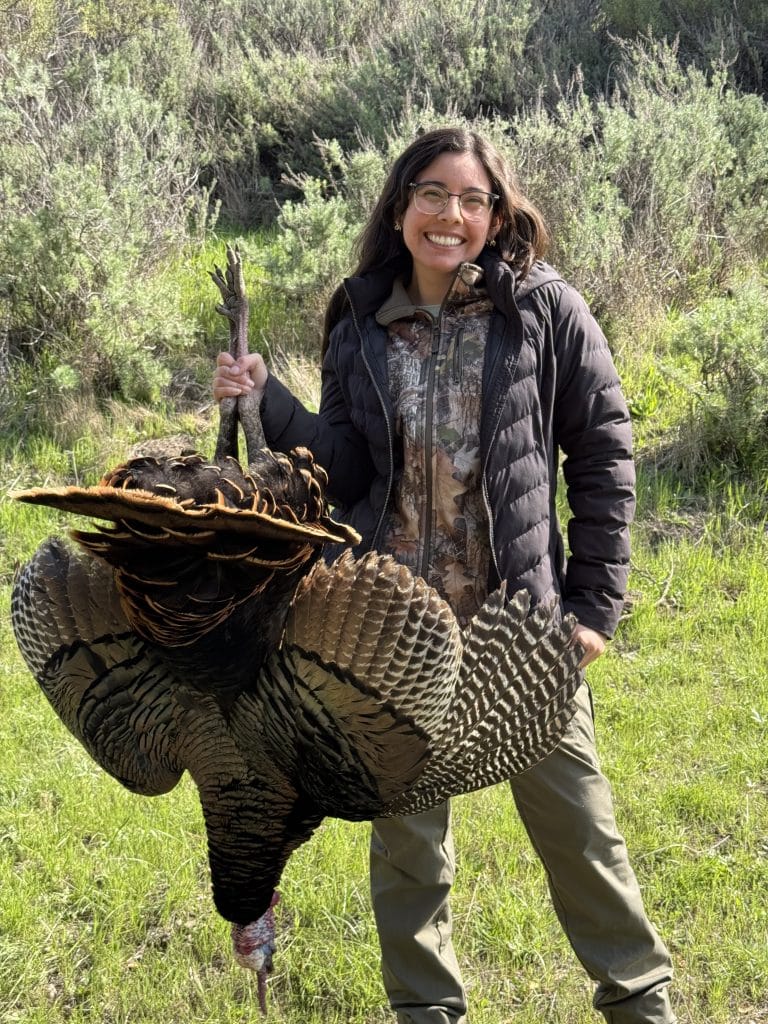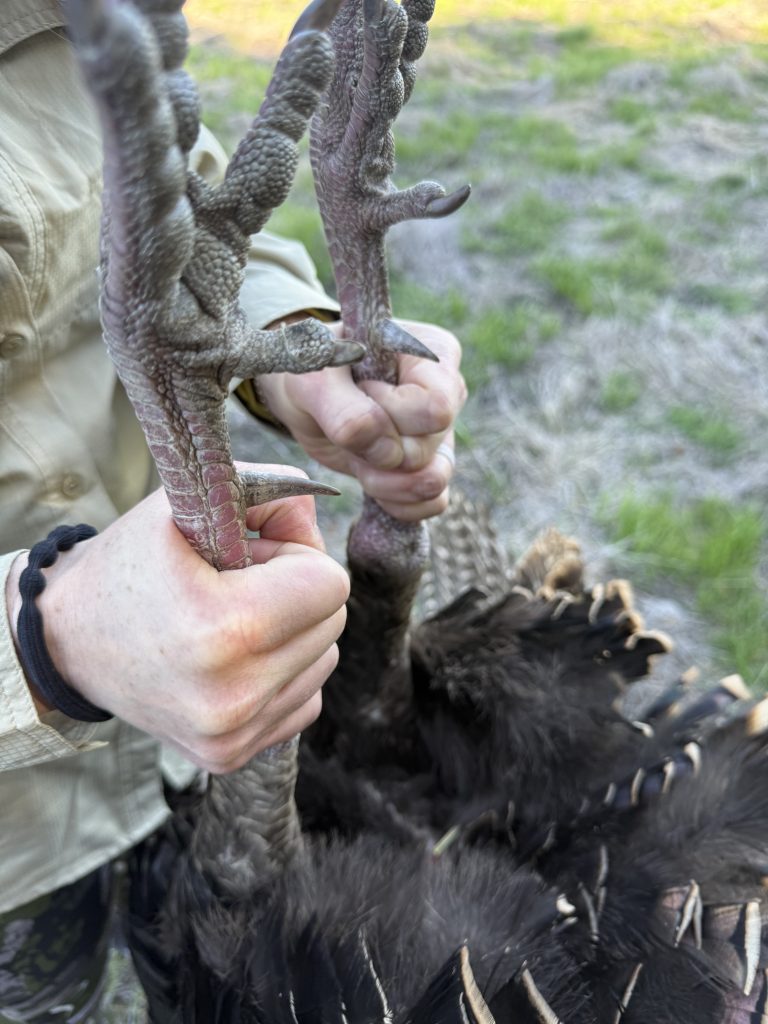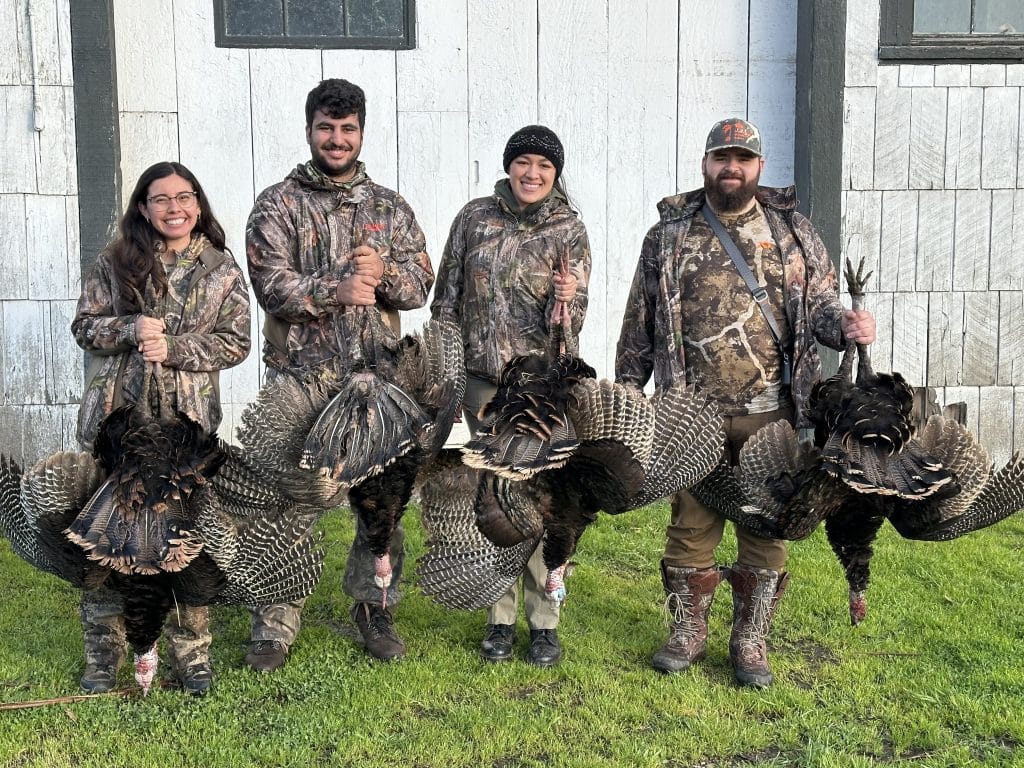
Walk through the oak woodlands of Northern California or the foothills of the Sierra Nevada, and you might spot a magnificent wild turkey strutting through the underbrush. These impressive birds, with their bronze-tinted feathers and distinctive fan-shaped tails, seem perfectly at home in California’s diverse landscapes. But here’s something that might surprise you: wild turkeys aren’t native to the Golden State.
The wild turkeys roaming California today are the result of one of the most successful wildlife reintroduction programs in the state’s history. From zero birds in the early 1900s to thriving populations across multiple counties, their story reveals how strategic conservation efforts can restore wildlife populations—sometimes with unexpected consequences.
Understanding where these birds came from and how they’ve adapted to California’s unique ecosystems offers fascinating insights into modern wildlife management. Their journey also raises important questions about ecological balance and the long-term effects of introducing non-native species to new environments.
The Original California: No Turkeys in Sight
Before European settlement, California’s wildlife landscape looked dramatically different from what we see today. While the state boasted an incredible diversity of native species—from grizzly bears to California condors—wild turkeys were notably absent. The closest native turkey populations lived hundreds of miles away in the southwestern United States and Mexico.
Native American tribes in California had access to abundant wildlife for hunting, including deer, elk, and numerous bird species. However, historical records and archaeological evidence confirm that wild turkeys never established natural populations in the region during pre-settlement times.
This absence wasn’t due to an unsuitable habitat. California’s oak woodlands, grasslands, and chaparral areas would prove ideal for turkeys once they arrived. Instead, geographic barriers and natural range limitations kept these birds from expanding into California on their own.
Strategic Reintroduction Takes Flight
The California Department of Fish and Wildlife recognized the potential for wild turkey populations in the state during the mid-20th century. Beginning in the 1950s, they launched an ambitious reintroduction program that would fundamentally change California’s wildlife landscape.
The initial efforts faced significant challenges. Early attempts to establish turkey populations using pen-raised birds proved largely unsuccessful. These domesticated turkeys lacked the survival instincts and adaptation skills necessary for thriving in the wild. Many failed to establish breeding populations or simply didn’t survive their first seasons.
Everything changed when wildlife managers shifted their approach. Instead of using captive-bred birds, they began relocating wild turkeys from established populations in other states. The primary source populations came from states like Texas, where Rio Grande wild turkeys had thrived for centuries.
This trap-and-transplant method proved remarkably effective. Wild-caught turkeys already possessed the behavioral patterns, foraging skills, and survival instincts needed to establish new populations. Between the 1950s and 1990s, the California Department of Fish and Wildlife released approximately 3,000 wild turkeys across the state.
From Small Flocks to Statewide Success 
The results exceeded all expectations. Wild turkey populations didn’t just survive in California—they flourished. Today, these birds can be found in 18 counties across the state, from the coastal ranges to the Sierra Nevada foothills.
Several factors contributed to this remarkable success. California’s oak woodlands provide ideal habitat, offering acorns as a primary food source and suitable nesting areas. The state’s mild climate allows turkeys to remain active year-round, unlike populations in colder regions that face harsh winter conditions.
Agricultural areas adjacent to wildlands create additional feeding opportunities. Turkeys readily adapt to eating various crops, seeds, and insects found in farming regions. This adaptability has allowed them to establish populations in diverse habitats throughout the state.
The absence of major predators also plays a role. While coyotes, bobcats, and mountain lions occasionally prey on turkeys, the overall predation pressure is manageable for healthy populations. Adult turkeys are formidable birds, and their vigilant behavior helps protect flocks from most threats.
Ecological Ripple Effects
The successful establishment of wild turkey populations has created both positive and challenging ecological impacts. On the beneficial side, turkeys contribute to seed dispersal, particularly for oak trees. As they forage for acorns, they help spread seeds across the landscape, potentially supporting forest regeneration.
However, their presence has also raised concerns among ecologists and land managers. Turkeys are opportunistic feeders that consume insects, small reptiles, and amphibians, which native species also depend upon. In some areas, their foraging behavior may impact native wildlife populations, though the full extent of these effects is still being studied.
Their scratching and foraging activities can disturb ground-nesting birds and alter vegetation patterns in sensitive habitats. Some native plant communities show signs of disturbance in areas with high turkey concentrations, particularly during nesting season when female turkeys create scrapes in the ground.
Modern Management Approaches
Today’s wildlife managers face the complex task of maintaining healthy turkey populations while minimizing negative impacts on native ecosystems. The California Department of Fish and Wildlife has developed comprehensive management strategies that balance conservation goals with ecological concerns.
Hunting regulations play a crucial role in population management. California now offers spring and fall turkey hunting seasons, with specific rules designed to maintain sustainable populations while providing recreational opportunities. These regulated hunts help prevent overpopulation in certain areas and generate revenue for conservation programs.
Habitat management programs focus on maintaining the oak woodlands and grasslands that turkeys depend upon. These efforts often benefit multiple species, creating wildlife corridors and preserving critical ecosystems throughout the state.
Ongoing research projects monitor turkey populations and their ecological impacts. Wildlife biologists track population trends, breeding success, and habitat usage patterns to inform future management decisions.
Where to Spot California’s Wild Turkeys 
If you’re interested in observing these impressive birds, several locations throughout California offer excellent viewing opportunities. The foothills of the Sierra Nevada, particularly around Nevada City and Grass Valley, support robust turkey populations that are relatively easy to spot during morning and evening hours.
Central Coast regions, including areas around Paso Robles and the Santa Lucia Mountains, provide another excellent destination for turkey watching. The oak-studded hills and grasslands create an ideal habitat, and turkeys often venture into open areas during feeding times.
Northern California’s wine country, especially Napa and Sonoma counties, offers frequent turkey sightings. Many vineyards and surrounding wildlands support healthy populations that adapt well to the mixed agricultural and natural landscapes.
When observing turkeys, maintain respectful distances and avoid disturbing flocks, especially during nesting season. These birds are generally tolerant of human presence but can become aggressive if they feel threatened or cornered.
The Future of Turkeys in California
The wild turkey reintroduction program stands as one of California’s most successful wildlife management achievements. From a complete absence to thriving populations across 18 counties represents a remarkable conservation success story.
However, this success brings new responsibilities. Wildlife managers must continue monitoring populations and ecological impacts to ensure that turkey success doesn’t come at the expense of native species. Future management strategies will likely focus on maintaining population balance while preserving California’s unique biodiversity.
Climate change and habitat loss present ongoing challenges for all wildlife species, including turkeys. Continued research and adaptive management approaches will be essential for maintaining healthy turkey populations while protecting native ecosystems.
Ready to learn more about California’s wildlife conservation efforts? Visit the California Department of Fish and Wildlife website to discover how their innovative programs are protecting and restoring wildlife populations across the Golden State. Your support for these conservation initiatives helps ensure that future generations can enjoy observing magnificent wild turkeys and countless other species in California’s diverse landscapes.

